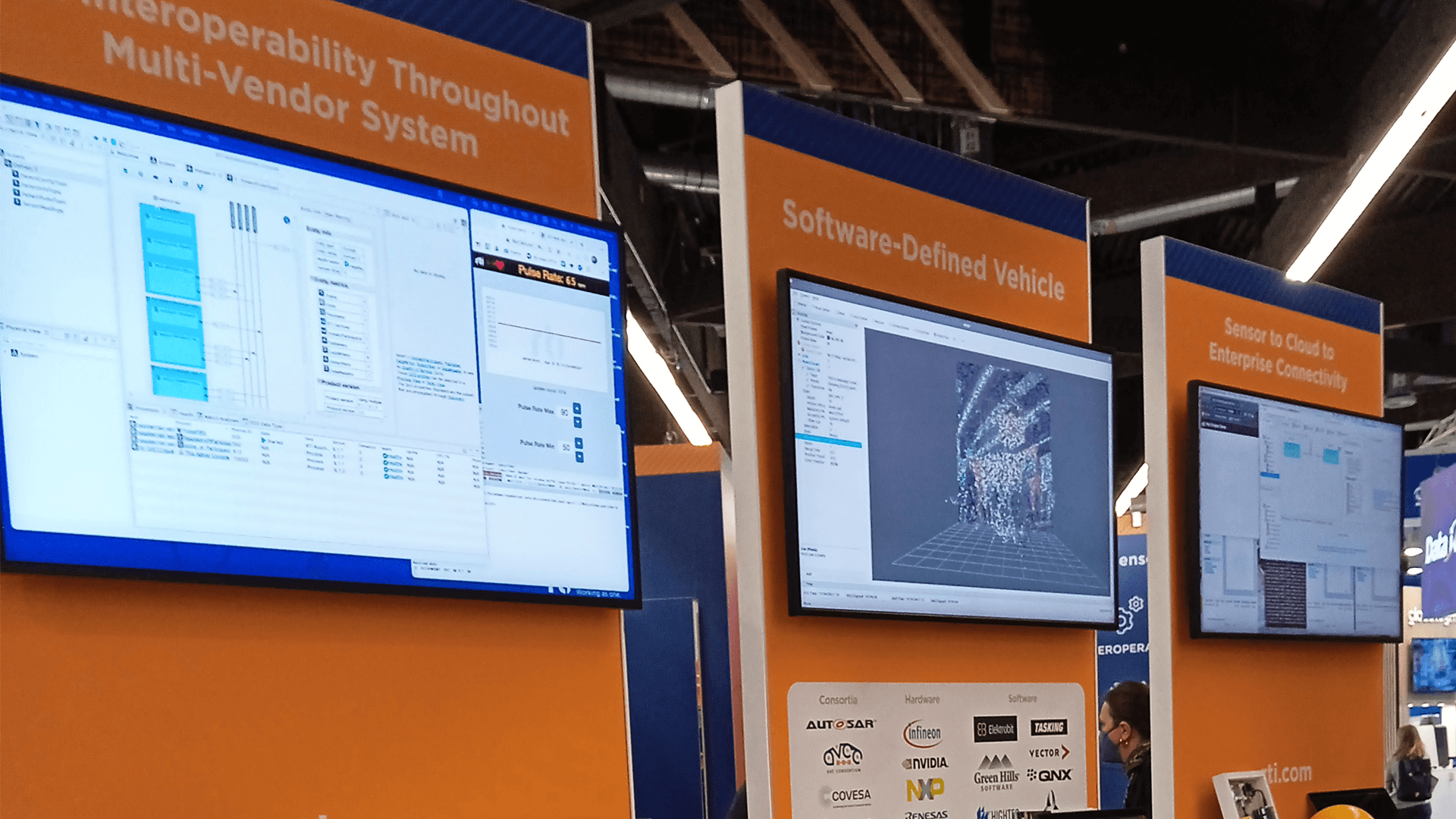Events Calendar
We're looking forward to seeing you at our next event! We want to hear about your business challenges and discuss how RTI Connext can help overcome them and give you a competitive edge.

January 2026

January 6, 2026
| January 9, 2026
Las Vegas, NV
CES 2026
Trade Show
Visit booth #4662 to experience how Connext Drive can put your next-gen SDV development on the fast track.
February 2026

February 9, 2026
| February 12, 2026
New Port, RI
Blue Innovation Symposium
Trade Show
Stop by the RTI booth at Blue Innovation Symposium that brings together over 400 participants for three days of education, networking, and matchmaking.

February 19, 2026
| February 21, 2026
Houston, TX
SAGES NBT Innovation Weekend
Trade Show
Stop by the RTI booth at the SAGES NBT Innovation Weekend! Darren Porras, RTI’s Market Development Manager, will also be presenting “Data Interoperability: The Foundation for Next-Gen Digital Surgery."
March 2026

March 10, 2026
| March 12, 2026
Nuremberg, Germany
Embedded World 2026 Exhibition & Conference
Trade Show
Visit us in booth 4-421 to engage in our hands-on demo station and consult with RTI technical experts on the best way to architect and connect your distributed systems.
April 2026

April 15, 2026
| April 16, 2026
Shanghai, China
The 7th Automotive Ethernet Summit China 2026
Trade Show
Visit us at booth A7, to try our hands-on demo and consult with RTI experts on connecting and architecting distributed systems. Join our speaking session on April 16, to learn about achieving deterministic, high-performance automotive communication.
May 2026

May 5, 2026
| May 6, 2026
Gothenburg, Sweden
VECS 2026
Trade Show
Visit us at Booth C01:24 for an interactive demo and expert insights. Don’t miss our talk on Day 2, May 6th at VECS 2026, where we’ll share strategies for smarter, scalable distributed systems.

May 27, 2026
| May 28, 2026
Boston, MA
DeviceTalks Boston
Trade Show
Stop by the RTI booth (#601) at DeviceTalks Boston to learn how leading MedTech companies rely on RTI software to deliver real-time data wherever it’s needed and to connect with our experts about AI-powered solutions.
June 2026

June 2, 2026
| June 3, 2026
London, UK
Avionics & Testing Innovations
Trade Show
Visit us at booth 22, to experience our hands-on demo and consult with RTI experts on designing and integrating reliable distributed systems. Join our speaking session to learn how data-centric approaches can accelerate and simplify verification and validation for next-generation avionics.
Didn't Make It?

On-Demand
Accelerating Delivery in the SDV Era: Bridging from Legacy Architectures
Virtual Forum
Watch industry experts from Ansys, AMD, Vector, and RTI as they explored new ways to bridge legacy and modern automotive systems, including system integration, code reuse, and emerging AI and SDV developer tools.

On-Demand
Fast to Prototype, Fast to Production: Architecting Autonomous Systems for Rapid Evolvability
Webinar
Watch how a data-centric design accelerated autonomous system development, enabled rapid prototyping, and supported standards such as UMAA, SOSA, and AUTOSAR.

On-Demand
Engineering Telesurgery: A Collaborative Blueprint for Advanced Systems Integration
Webinar
Watch how Haply, Kinova, MedAcuity, and RTI combined robotics, haptics, and real-time control to deliver a fully integrated surgical robotic system in under two months.
 Success-Plan Services
Success-Plan Services